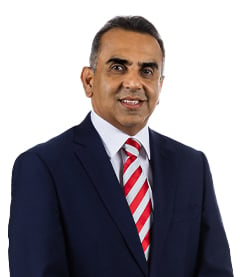- Market services
-
Compliance audits & reviews
Our audit team undertakes the complete range of audits required of Australian accounting laws to help you to help you meet obligations or fulfil best practice procedures.
-
Audit quality
We are fiercely dedicated to quality, use proven and globally tested audit methodologies, and invest in technology and innovation.
-
Financial reporting advisory
Our financial reporting advisory team helps you understand changes in accounting standards, develop strategies and communicate with your stakeholders.
-
Audit advisory
Grant Thornton’s audit advisory team works alongside our clients, providing a full range of reviews and audits required of your business.

-
Corporate tax & advisory
We provide comprehensive corporate tax and advisory service across the full spectrum of the corporate tax process.
-
Private business tax & advisory
We work with private businesses and their leaders on all their business tax and advisory needs.
-
Tax compliance
We work alongside clients to manage all tax compliance needs and identify potential compliance or tax risk issues.
-
Employment tax
We help clients understand and address their employment tax obligations to ensure compliance and optimal tax positioning for their business and employees.
-
International tax
We understand what it means to manage tax issues across multiple jurisdictions, and create effective strategies to address complex challenges.
-
GST, stamp duty & indirect tax
Our deep technical knowledge and practical experience means we can help you manage and minimise the impact of GST and indirect tax, like stamp duty.
-
Tax law
Our team – which includes tax lawyers – helps you understand and implement regulatory requirements for your business.
-
Innovation Incentives
Our national team has extensive experience navigating all aspects of the government grants and research and development tax incentives.
-
Transfer pricing
Transfer pricing is one of the most challenging tax issues. We help clients with all their transfer pricing requirements.
-
Tax digital consulting
We analyse high-volume and unstructured data from multiple sources from our clients to give them actionable insights for complex business problems.
-
Corporate simplification
We provide corporate simplification and managed wind-down advice to help streamline and further improve your business.
-
Superannuation and SMSF
Increasingly, Australians are seeing the benefits, advantages and flexibility of taking control of their own superannuation and retirement planning.

-
Payroll consulting & Award compliance
Many organisations are grappling with a myriad of employee agreements and obligations, resulting in a wide variety of payments to their people.
-
Cyber resilience
The spectrum of cyber risks and threats is now so significant that simply addressing cybersecurity on its own isn’t enough.
-
Internal audit
We provide independent oversight and review of your organisation's control environments to manage key risks, inform good decision-making and improve performance.
-
Financial crime
Our team helps clients navigate and meet their obligations to mitigate crime as well as develop and implement their risk management strategies.
-
Consumer Data Right
Consumer Data Right (CDR) aims to provide Australians with more control over how their data is used and disclosed.
-
Risk management
We enable our clients to achieve their strategic objectives, fulfil their purpose and live their values supported by effective and appropriate risk management.
-
Controls assurance
In Australia, as with other developed economies, regulatory and market expectations regarding corporate transparency continue to increase.
-
Governance
Through fit for purpose governance we enable our clients to make the appropriate decisions on a timely basis.
-
Regulatory compliance
We enable our clients to navigate and meet their regulatory and compliance obligations.

-
Forensic accounting and dispute advisory
Our team advises at all stages of a litigation dispute, taking an independent view while gathering and reviewing evidence and contributing to expert reports.
-
Investigations
Our licensed forensic investigators with domestic and international experience deliver high quality results in the jurisdictions in which you operate.
-
Asset tracing investigations
Our team of specialist forensic accountants and investigators have extensive experience in tracing assets and the flow of funds.

-
Mergers and acquisitions
Our mergers and acquisitions specialists guide you through the whole process to get the deal done and lay the groundwork for long-term success.
-
Acquisition search & strategy
We help clients identify, finance, perform due diligence and execute acquisitions to maximise the growth opportunities of your business.
-
Selling a business
Our M&A team works with clients to achieve a full or partial sale of their business, to ensure achievement of strategic ambitions and optimal outcomes for stakeholders.
-
Operational deal services
Our operational deal services team helps to ensure the greatest possible outcome and value is gained through post merger integration or post acquisition integration.
-
Transaction advisory
Our transaction advisory services support our clients to make informed investment decisions through robust financial due diligence.
-
Business valuations
We use our expertise and unique and in-depth methodology to undertake business valuations to help clients meet strategic goals.
-
Tax in mergers & acquisition
We provide expert advice for all M&A taxation aspects to ensure you meet all obligations and are optimally positioned.

-
Corporate finance
We provide effective and strategic corporate finance services across all stages of investments and transactions so clients can better manage costs and maximise returns.
-
Debt advisory
We work closely with clients and lenders to provide holistic debt advisory services so you can raise or manage existing debt to meet your strategic goals.
-
Working capital optimisation
Our proven methodology identifies opportunities to improve your processes and optimise working capital, and we work with to implement changes and monitor their effectiveness.
-
Capital markets
Our team has significant experience in capital markets and helps across every phase of the IPO process.
-
Debt and project finance raising
Backed by our experience accessing full range of available funding types, we work with clients to develop and implement capital raising strategies.
-
Private equity
We provide advice in accessing private equity capital.
-
Financial modelling
Our financial modelling advisory team provides strategic, economic, financial and valuation advice for project types and sizes.
-
Payments advisory
We provide merchants-focused payments advice on all aspects of payment processes and technologies.

-
Voluntary administration & DOCA
We help businesses considering or in voluntary administration to achieve best possible outcomes.
-
Corporate insolvency & liquidation
We help clients facing corporate insolvency to undertake the liquidation process to achieve a fair and orderly company wind up.
-
Complex and international insolvency
As corporate finance specialists, Grant Thornton can help you with raising equity, listings, corporate structuring and compliance.
-
Safe Harbour advisory
Our Safe Harbour Advisory helps directors address requirements for Safe Harbour protection and business turnaround.
-
Bankruptcy and personal insolvency
We help clients make informed choices around bankruptcy and personal insolvency to ensure the best personal and stakeholder outcome.
-
Creditor advisory services
Our credit advisory services team works provides clients with credit management assistance and credit advice to recapture otherwise lost value.
-
Small business restructuring process
We provide expert advice and guidance for businesses that may need to enter or are currently in small business restructuring process.
-
Asset tracing investigations
Our team of specialist forensic accountants and investigators have extensive experience in tracing assets and the flow of funds.

-
Independent business reviews
Does your company need a health check? Grant Thornton’s expert team can help you get to the heart of your issues to drive sustainable growth.
-
Commercial performance
We help clients improve commercial performance, profitability and address challenges after internal or external triggers require a major business model shift.
-
Safe Harbour advisory
Our Safe Harbour advisory helps directors address requirements for Safe Harbour protection and business turnaround.
-
Corporate simplification
We provide corporate simplification and managed wind-down advice to help streamline and further improve your business.
-
Director advisory services
We provide strategic director advisory services in times of business distress to help directors navigate issues and protect their company and themselves from liability.
-
Debt advisory
We work closely with clients and lenders to provide holistic debt advisory services so you can raise or manage existing debt to meet your strategic goals.

-
Business planning & strategy
Our clients can access business planning and strategy advice through our value add business strategy sessions.
-
Private business company secretarial services
We provide company secretarial services and expert advice for private businesses on all company secretarial matters.
-
Outsourced accounting services
We act as a third-party partner to international businesses looking to invest in Australia on your day-to-day finance and accounting needs.
-
Superannuation and SMSF
We provide SMSF advisory services across all aspects of superannuation and associated tax laws to help you protect and grow your wealth.
-
Management reporting
We help you build comprehensive management reporting so that you have key insights as your business grows and changes.
-
Financial reporting
We help with all financial reporting needs, including set up, scaling up, spotting issues and improving efficiency.
-
Forecasting & budgeting
We help you build and maintain a business forecasting and budgeting model for ongoing insights about your business.
-
ATO audit support
Our team of experts provide ATO audit support across the whole process to ensure ATO requirements are met.
-
Family business consulting
Our family business consulting team works with family businesses on running their businesses for continued future success.
-
Private business taxation and structuring
We help private business leaders efficiently structure their organisation for optimal operation and tax compliance.
-
Outsourced CFO services
Our outsourced CFO services provide a full suite of CFO, tax and finance services and advice to help clients manage risk, optimise operations and grow.
-
ESG & sustainability reporting
There is a growing demand for organisations to provide transparency on their commitment to sustainability and disclosure of the nonfinancial impacts of their business activities. Commonly, the responsibility for sustainability and ESG reporting is landing with CFOs and finance teams, requiring a reassessment of a range of reporting processes and controls.
-
ESG & sustainability advisory
With the ESG and sustainability landscape continuing to evolve, we are focussed on helping your business to understand what ESG and sustainability represents and the opportunities and challenges it can provide.
-
ESG, sustainability and climate reporting assurance
As the demand for organisations to prepare information in relation to ESG & sustainability continues to increase, through changes in regulatory requirements or stakeholder expectations, there is a growing need for assurance over the information prepared.

-
Management consulting
Our management consulting services team helps you to plan and implement the right strategy to deliver sustainable growth.
-
Financial consulting
We provide financial consulting services to keep your business running so you focus on your clients and reaching strategic goals.

-
China practice
The investment opportunities between Australia and China are well established yet, in recent years, have also diversified.
-
Japan practice
The trading partnership between Japan and Australia is long-standing and increasingly important to both countries’ economies.
-
India practice
It’s an exciting time for Indian and Australian businesses looking to each jurisdiction as part of their growth ambitions.
-
Singapore practice
Our Singapore Practice works alongside Singaporean companies to achieve growth through investment and market expansion into Australia.
-
Vietnam practice
Investment and business opportunities in Vietnam are expanding rapidly, driven by new markets, diverse industries, and Vietnam's growing role in export manufacturing, foreign investment, and strong domestic demand.

-
 Client Alert Government Grants in FY25As we embark on a new financial year, it’s crucial to take a strategic approach to understanding the government grants landscape.
Client Alert Government Grants in FY25As we embark on a new financial year, it’s crucial to take a strategic approach to understanding the government grants landscape. -
 Client Alert Consultation on foreign resident CGT rules commencesTreasury is taking steps to ensure fairer tax treatment for foreign resident investors by tightening Australia's foreign resident Capital Gains Tax (CGT) regime. Proposed changes aim to broaden the CGT base and enhance integrity, impacting infrastructure, energy, agriculture, and more.
Client Alert Consultation on foreign resident CGT rules commencesTreasury is taking steps to ensure fairer tax treatment for foreign resident investors by tightening Australia's foreign resident Capital Gains Tax (CGT) regime. Proposed changes aim to broaden the CGT base and enhance integrity, impacting infrastructure, energy, agriculture, and more. -
 Insight Australian wine export strategies post-China tariff removalFollowing the recent removal of tariffs on Australian wine by China, the industry is keen to rebuild relations and explore the right export markets. This presents Australian wine producers with a chance to reassess their position in the global market.
Insight Australian wine export strategies post-China tariff removalFollowing the recent removal of tariffs on Australian wine by China, the industry is keen to rebuild relations and explore the right export markets. This presents Australian wine producers with a chance to reassess their position in the global market. -
 Insight Cultivating innovation: A guide to claiming the R&D Tax Incentive in the Agribusiness sectorTo facilitate continued innovation in the Agribusiness sector, the Federal Government’s Research and Development Tax Incentive supports companies to undertake research and development activities that meet the eligibility criteria.
Insight Cultivating innovation: A guide to claiming the R&D Tax Incentive in the Agribusiness sectorTo facilitate continued innovation in the Agribusiness sector, the Federal Government’s Research and Development Tax Incentive supports companies to undertake research and development activities that meet the eligibility criteria.
-
Renewable Energy
Transformation through energy transition

-
Flexibility & benefits
The compelling client experience we’re passionate about creating at Grant Thornton can only be achieved through our people. We’ll encourage you to influence how, when and where you work, and take control of your time.
-
Your career development
At Grant Thornton, we strive to create a culture of continuous learning and growth. Throughout every stage of your career, you’ll to be encouraged and supported to seize opportunities and reach your full potential.
-
Diversity & inclusion
To be able to reach your remarkable, we understand that you need to feel connected and respected as your authentic self – so we listen and strive for deeper understanding of what belonging means.
-
In the community
We’re passionate about making a difference in our communities. Through our sustainability and community engagement initiatives, we aim to contribute to society by creating lasting benefits that empower others to thrive.
-
Graduate opportunities
As a new graduate, we aim to provide you more than just your ‘traditional’ graduate program; instead we kick start your career as an Associate and support you to turn theory into practice.
-
Vacation program
Our vacation experience program will give you the opportunity to begin your career well before you finish your degree.
-
The application process
Applying is simple! Find out more about each stage of the recruitment process here.
-
FAQs
Got questions about applying? Explore frequently asked questions about our early careers programs.
-
Our services lines
Learn about our services at Grant Thornton
-
Current opportunities
Current opportunities
-
Remarkable people
Our team members share their remarkable career journeys and experiences of working at Grant Thornton.
-
Working at Grant Thornton
Explore our culture, benefits and ways we support you in your career.
-
Current opportunities
Positions available.
-
Contact us
Get in touch

1. The aged care ecosystem
The fundamentals of the sector – funding, regulation, governance – are still very strong, but not without their challenges.
The Australian National Aged Care Classification (AN-ACC), launched on 1 October 2022, was seen as a real opportunity for funding reform and welcomed by many. We are already seeing more funding for providing care under the AN-AAC model than the former Aged Care Funding Instrument (ACFI). Operators who successfully navigated the financial challenges of recent years and maintained an efficient and viable operational model are expected to have a stronger year ahead. Those operating on slender margins should assess their enterprise value and look at opportunities to diversify revenues and manage the risk to their business.
While some providers talked about inflation and recession, it wasn’t the backbone of the discussions. In fact, higher interest rates have increased funding for many providers as Daily Accommodation Payments (DAP) have increased relative to Refundable Accommodation Deposits (RAD) via an increased Maximum Permissible Interest Rate (MPIR). While this will ease some pressure on providers, it won’t remove the structural deficits many organisations are experiencing.
As more funding becomes available, providers can focus on better facilitating solutions that improve outcomes for consumers and meet government systems and process requirements. However, with sector reform gathering pace, understanding regulatory change and implementing this can lead to bottlenecks, compliance issues, and costly solutions to address requirements. Unfortunately, it may be litigation that drives change.
Three areas of concern were consistently identified by providers in all States.
- potential conflicts between the Aged Care Act 1997 (Cth), the Corporations Act 2001 (Cth) and existing consumer protections. Proposed changes to government arrangements could potentially create legal and practical conflicts and tensions when implementing changes to accommodate the new requirements for providers
- ongoing research is required to validate the government’s mandatory care minute standards to ensure that this is a meaningful measure of quality for aged care services. Contemporaneously, research needs to be undertaken to develop and assess alternative measures should mandatory care minutes prove inadequate
- the impacts of the Aged Care Quality and Safety Commission (ACQSC) Code of Conduct for Aged Care (introduced on 1 December 2022) need to be assessed and appropriate strategies developed by providers to ensure they are appropriately implemented.
Although there was some concern that regulation was snowballing and distracting providers from delivering care to the community, the need for uncompromising regulation is clearly understood. It remains to be seen if delivering on aged care reform, rather than considering alternatives is going to benefit the sector.
2. Recharge your talent strategy
Workforce remains the critical issue of the sector and many are adopting new tactics to attract and retain talent. Innovative use of immigration programs and the provision of short-term worker accommodation is making a difference in some markets. Exponents are keen to share in their success.
Modelling the demand side of the aged care workforce is easy. However, understanding the constraints of the supply side, what the sector can realistically deliver, and the cost involved, is an increasingly international issue.
Domestic sector and immigration programs are competing internationally to attract workers. Our international competitors are looking at these same offshore labour markets to address their own labour shortfall. The Australian work environment is also more highly regulated than other OECD countries, making it less attractive for workers seeking to develop their careers internationally. Competition from Canada and the UK with lower entry barriers are beginning to impact international recruitment for Australian aged care services.
Strategies adopted by different countries to recruit and attract workers include back to work programs to attract qualified and unqualified workers back to the sector. Other initiatives include, the development of industry image and attractiveness policies, financial support and training for unemployed people or caregivers willing to obtain licenses and certification as care workers, and non-traditional recruitment methods.
One positive step includes the decision of the Fair Work Commission (FWC) on 4 November 2022 to give a 15 per cent wage increase on award rates for direct care workers – nurses, personal care workers, assistants in nursing and home care workers. However, there are concerns about the expectation that has been created for those that qualify and existing obligations under the ACQSC Enterprise Agreement and those not included, as well as other multi-employer bargaining arrangements. Equally, the Government’s decision to phase the increases, leading to an 18-month wait has been met with concern.
3. Transformation through technology
The 2022-23 Federal Budget set aside $312m to enhance the sectors technology needs, but is light on the detail of how it will do this. Historically, while the benefits of technology are understood, the sectors’ adoption of new technologies has been slow, limited and adhoc. Current margins and fixed labour inputs do not support significant investments in technology that improves efficiency and effectiveness of services.
Some providers have taken the leap of faith and are implementing planned technology roadmaps to address staff shortages through productivity improvements while enhancing care quality and facility attractiveness. Uplifting the interoperability (integration) of their workforce management, residential management, and clinical systems, can reduce data entry duplication, support more efficient workflows and enable improved reporting.
While transformation through technology can be time consuming, and it will be critical to ensure compliance remains front and centre, a well-executed technology strategy will be a significant contributor to competitive advantage. The operators who thrive will be those who are able to stay one step ahead of the market.
4. Building a community
The competition for residential accommodation stock is increasing on multiple fronts. Older stock is not equipped to cope with the increasing needs of the aged care community, and new stock is slow to market. Increasing construction costs are putting many providers off new builds, as are increasing interest rates on loan portfolios. Regional developments are increasingly risky as the supporting infrastructure is limited or unavailable. Some providers remain highly acquisitive and are seeking out opportunities for existing stock, but these are rare. Some are looking to utilise technology to support more remote facilities.
Beyond the bricks and mortar, we are seeing more providers across the aged care community working together. A return to more collaborative models, not seen for almost a decade, arose during the pandemic. Supported by the My Aged Care portal, consumers are assessed and supported to locate and access services.
We are seeing consumers increasingly go directly to providers, and collaboration is essential to manage this. Rebuilding trust within our communities is critical and increased collaboration can only facilitate more positive outcomes for consumers.
Of course, this is a general snapshot developed from our recent discussions with providers. What we know for certain is that opportunities abound for aged care providers that can adapt, innovate, and evolve in this rapidly changing landscape.
Grant Thornton, in conjunction with the Commonwealth Bank of Australia, regularly hosts a series of discussions with aged care providers across the country. These discussions address key issues and challenges in the sector and offer solutions with a view to improving the overall performance of the aged care system and the quality of services to older Australians.



































